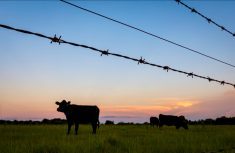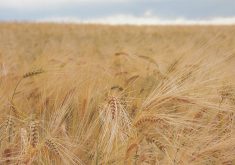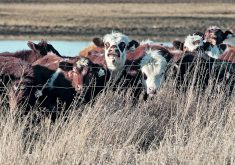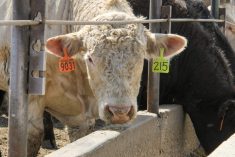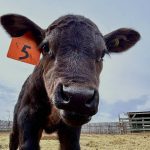Compared to last week, western Canadian feeder cattle markets traded $2-$4 on either side of unchanged. Once again, overall volumes were limited, with small strings and singles moving through auction barns. The quality was quite variable and offbeat stragglers were quite common. Buyers incorporate a risk discount on these cattle; therefore, prices do not represent true value for the weight category. Feedlot operators were picking away at feeders that could eventually develop into market-quality finished animals. Grass conditions are excellent across the Prairies. There is light demand for smaller calves.
Read Also

U.S. grains: Corn slips from six-week high, soybeans down on China demand worries
U.S. corn futures fell from a six-week peak on Wednesday on profit-taking and technical selling after three sessions of gains as an expected record-large U.S. harvest weighed on the market.
Quality cattle over 700 pounds were well bid but again overall numbers were limited. Feedlot operators are surprised by the prices being quoted for fresh yearlings and calves off grass. Larger-frame quality steers just over 800 lbs. are now valued around $220-$225 and 575-lb. steers are valued around $265. Feed grain prices continue to trend lower while the deferred live cattle futures remain in an upward trend.
South of Edmonton, a small group of mixed steers on small grain ration with full health data weighing 714 lbs. were valued at $227. North of Calgary, a handful of tan steers weighing just over 720 lbs. were valued at $232. In the Lethbridge area, Simmental blended larger-frame 830-lb. steers were treasured at $225 landed in the feedlot and their younger sisters weighing 810 lbs. were valued at $205. A handful of mixed thin steers weighing just over 900 lbs. were quoted at $194 in east-central Saskatchewan. Yearlings fresh off grass will be hot items during August. Comments from cattle buyers suggest that 1,000-lb. heifers will trade in the range of $188-$195 while 1,000-lb. steers will move at $208 to as high as $212. The market appears to be heating up.
Feedlot operators were stepping forward for lighter-weight calves given the projections for tighter yearling supplies this fall. In east-central Saskatchewan, black mixed steers weighing 540 pounds reached up to $263. A feedlot operator in Saskatchewan’s northeast reported a larger string of steers weighing 575 lbs. dropped the gavel at $265. In the Lethbridge area, two handfuls of mixed Charolais-blended steers weighing 600 lbs. were valued at $262 landed in the feedlot.
The 2022 U.S. calf crop is expected to come in at 34.6 million head, according to the U.S. Department of Agriculture. This number is down 485,000 head from the 2021 calf crop of 35.085 million head. Canadian calendar-year-to-date feeder cattle exports to the U.S. for the week ending July 9 were 135,553 head. This is up 173 per cent from year-ago levels. Last year, it was the year for the packer. The fall of 2022 and 2023 will be the year for the cattle producer.
— Jerry Klassen is president and founder of Resilient Capital, specializing in proprietary commodity futures trading and market analysis. Jerry consults with feedlots on risk management and writes a weekly cattle market commentary. He can be reached at 204-504-8339 or via his website at ResilCapital.com.




